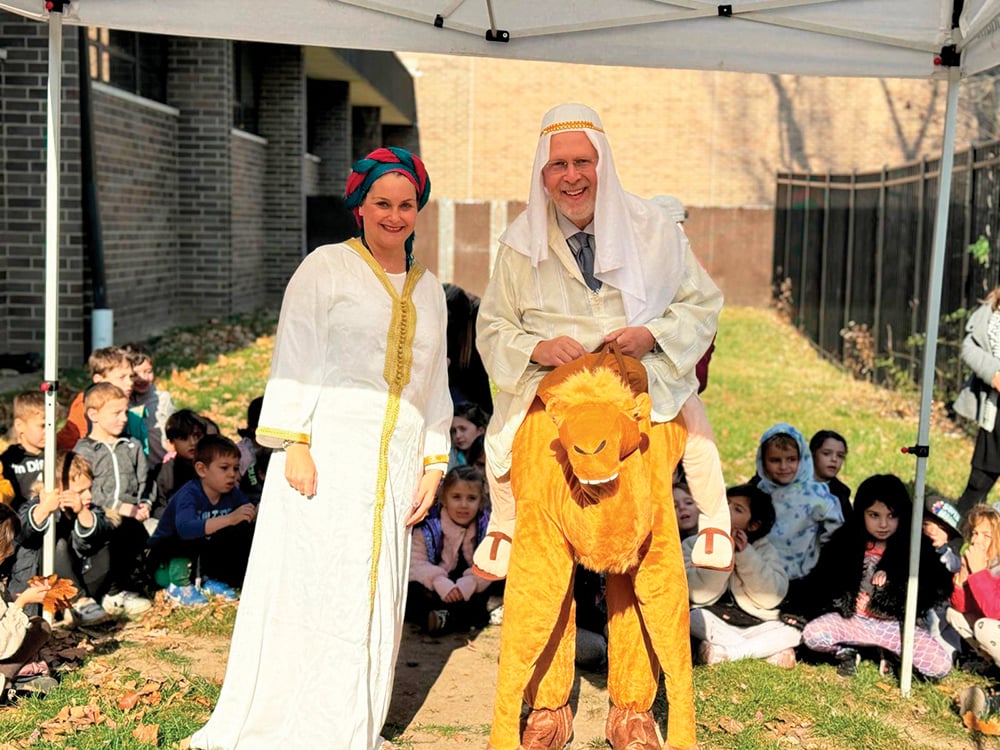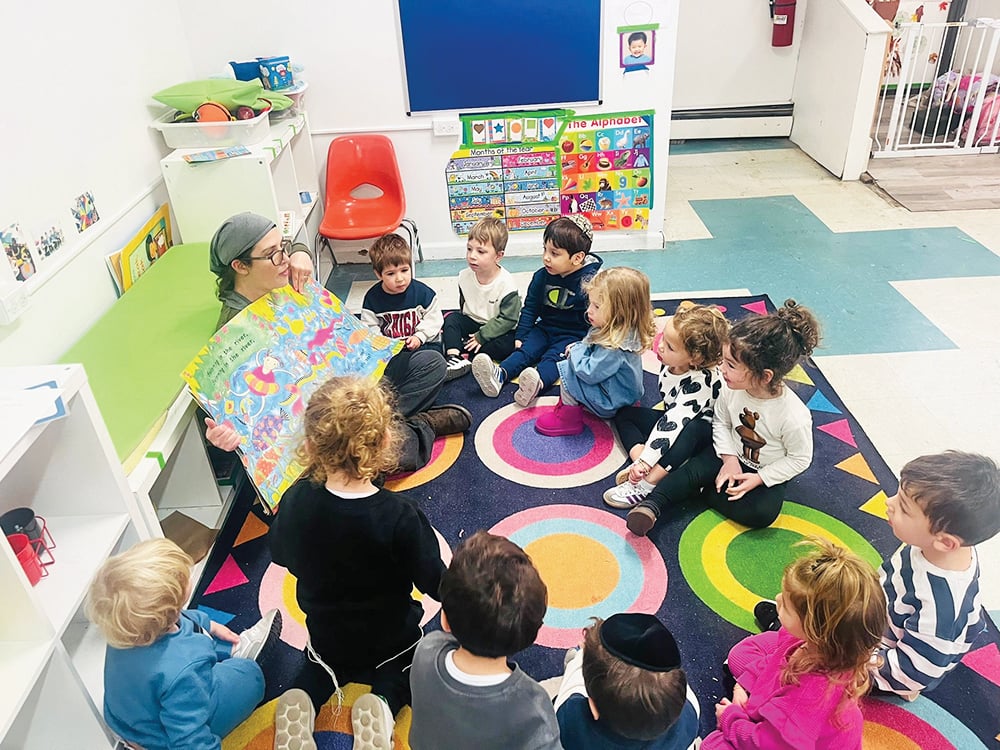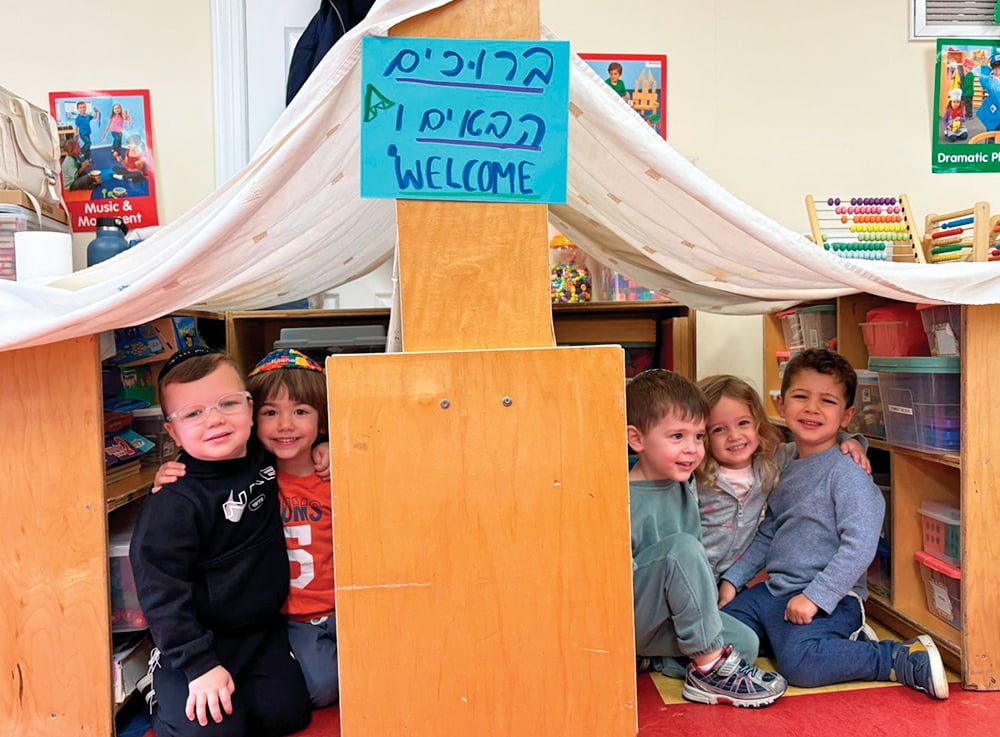In Megillah 21a, Rabbi Abahu declares that rebbi and talmid should be at the same physical level. Either teacher and student should sit on a couch, or they should both sit on the ground. He points to Devarim 5:27, where Hashem tells Moshe to stand with him. Besides taking note of the astonishing theological boldness, Rabbi Abahu sees this initial teaching of the Torah as the template for all future teachings.
Rabbi Abahu was a third-generation Amora of Israel, and his primary teacher was Rabbi Yochanan. I wonder whether this level approach is Rabbi Abbahu’s innovation, and was not employed by Rabbi Yochanan when teaching Rabbi Abbahu, due to the following incident (Bava Kamma 117a):
A certain man wanted to report another individual’s straw to the gentile authorities, who would seize it. He came before Rav, who told him not to report it. When the man insisted he would, Rav Kahana II, who was Rav’s student, broke the man’s neck. Rav advised Rav Kahana to flee to Israel, since the new Persian regime will not stand for this. Rav also advises him to not challenge any of Rabbi Yochanan’s statements for seven years. Rav Kahana accepted this upon himself, but his reticence to speak up was interpreted as ignorance, and he was repeatedly moved backward until he was seven rows back. At that point he decided that the seven rows corresponded to the seven years of his promise, and resolved to speak up.
He asked Rabbi Yochanan to repeat the shiur, and now challenged each statement. Upon each challenge, they moved Rav Kahana one row up. Also, Rabbi Yochanan was seated on seven cushions. As Rav Kahana successively challenged each statement, they removed one cushion, until Rabbi Yochanan was seated on the floor. The tale continues, but the point I’d extract from this is that initially, Rabbi Yochanan, who was Rabbi Abbahu’s teacher, was not seated on the floor at the same level as the students. Perhaps this was then Rabbi Abahu’s innovation in teaching, grounded in a derasha.
Alternatively, Daniel Sperber, in his article, “On the Unfortunate Adventures of Rav Kahana: A Passage of Saboraic Polemic from Sasanian Persia,” argues that the story is a polemic for the supremacy of Babylonian style of study, and is not historical. He points to linguistic evidence: Pehlevi words. He also points to chronological evidence: Rabbi Yochanan is old in the story, but if Rav is alive, Rabbi Yochanan couldn’t be older than 60 in Rav’s final year; meanwhile, the shift from Parthian to Sasanian regime, described as recent, would be even earlier in Rav’s lifetime. He points to structural evidence, as the number of rows in the yeshiva. He also notes Persian motifs, such as the silver rather than gold eyelid-lifter, and the pile of mats. It cannot be relied on for details of the setup in Rabbi Yochanan’s yeshiva and the relative positions of teacher and student.
Late Tannaitic practice also had this divergence. In Bava Metzia 84b, Rabban Shimon ben Gamliel II and Rabbi Yehoshua ben Korcha (fourth-generation Tannaim) were sitting on benches, and Rabbi Eleazar b. Rabbi Shimon and Rabbi (Yehuda HaNasi, fifth generation) sat on the ground before them, out of respect. The latter two would raise difficulties and answer them, and the bench-sitting Sages said of the youths, “we drink from their waters yet they sit on the ground?” Thereupon, they brought them benches, though eventually they were demoted due to interpersonal politics. Rabbi Abahu’s recommendation certainly differs from this Tannaitic practice.
Our sugya (Megillah 21a) also mentions that sitting itself was an innovation. A brayta records that from the days of Moshe until Rabban Gamliel’s time they would stand while studying Torah. The implied source is Rabbi Abahu’s verse, “stand here with me,” with focus on the “standing” rather than on the “with me.” Once Rabban Gamliel died, weakness descended to the world and they would study Torah while sitting. The Talmudic Narrator points us to the Mishnah in Sotah 49a, that when Rabban Gamliel died, honor for the Torah ceased.
The aforementioned Tanna was Rabban Gamliel I, the Elder (first century BCE–first century CE, at the end of the Second Temple period). A first-generation Tanna, he was grandson of Hillel the Elder and presided over the Sanhedrin from around 10–50 CE. His son was the aforementioned Rabban Shimon b. Gamliel II, and his grandson was the one more commonly referred to as plain Rabban Gamliel, namely Rabban Gamliel II of Yavneh (third-generation Tanna).
We know this is Rabban Gamliel I for two reasons. One is that our Gemara is citing and interpreting the Mishnah in Sotah, which reads, in full:
מִשֶּׁמֵּת רַבָּן יוֹחָנָן בֶּן זַכַּאי, בָּטַל זִיו הַחׇכְמָה. מִשֶּׁמֵּת רַבָּן גַּמְלִיאֵל הַזָּקֵן, בָּטַל כְּבוֹד הַתּוֹרָה וּמֵתָה טׇהֳרָה וּפְרִישׁוּת. מִשֶּׁמֵּת רַבִּי יִשְׁמָעֵאל בֶּן פִּאָבִי, בָּטְלָה זִיו הַכְּהוּנָּה. מִשֶּׁמֵּת רַבִּי, בָּטְלָ[ה] עֲנָוָה וְיִרְאַת חֵטְא.
That Mishnah specified “the Elder,” even if our local citation doesn’t. Also, in context, Rabban Yochanan b. Zakkai and Rabbi Yishmael b. Favi the kohen gadol (mentioned by Josephus) are first-century figures, even if Rabbi Yehuda HaNasi at the end is much later. Furthermore, when Rabban Gamliel II was deposed, Rabbi Eleazar b. Azarya took over and lowered the standards to enter the study hall; they installed several benches to accommodate the new students (Berachot 28a). Thus, by this time people already sat while studying Torah.
Rabbi Dr. Joshua Waxman teaches computer science at Stern College for Women, and his research includes programmatically finding scholars and scholastic relationships in the Babylonian Talmud.













